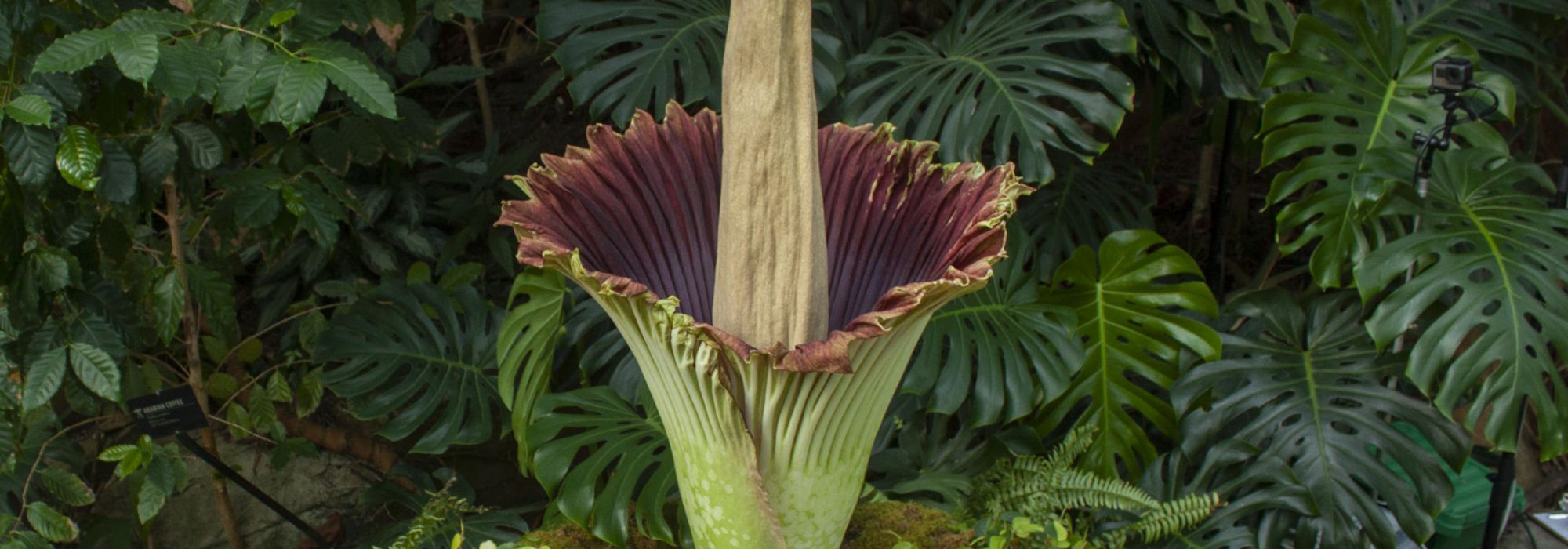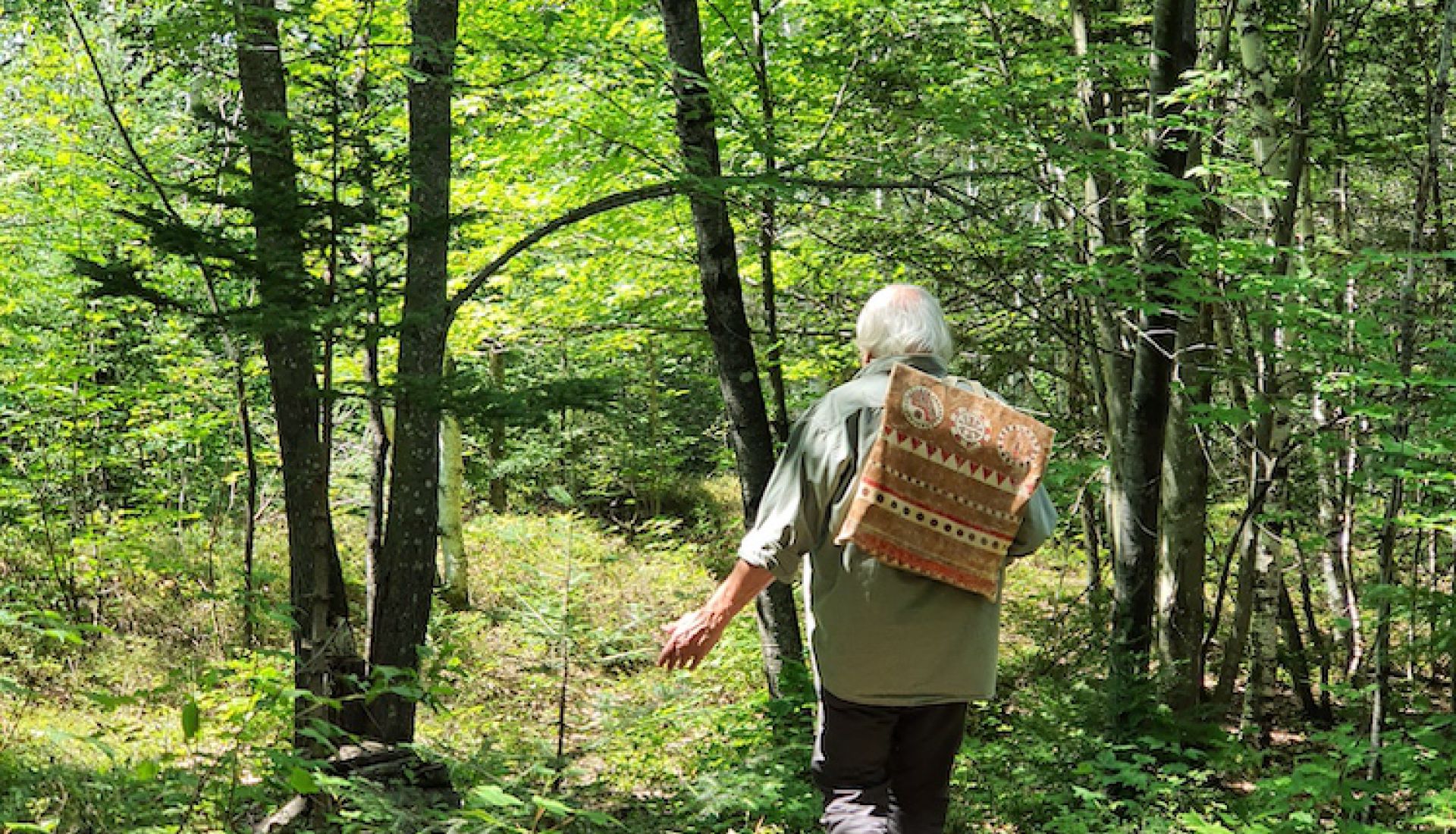Intro
Teletrophicate(s) began as a research-creation project centered around two speculative organisms created as hybrids between digital technologies and natural ecosystems. While researching methods for harvesting energy from the anaerobic microbial communities of mud we simultaneously extended our readings on ecology, energy, and materiality, and a much larger web began to unfold in front of us. Through our research-creation were we criticality discussing or contributing to a larger system of ecological misunderstandings? Teletrophicate(s) was thus transformed into an engaged practice of research, discussion, reflection, and re-learning. You are reading the culmination of our studies. This essay is structured as both critical discussion, and tangible research gravitating around the speculative design of the hybrid organisms Teletrophicate(s). We will first discuss the conceptual aspect of the project and our technical research direction. Following the conceptual, we’ll examine what defines an ecosystem and the politics behind environment formation, after all “There are no neutral narratives. A narrative presentation begins—assuming this is the intent—long before it is able to make explicit the perspective it is framing” (Stengers, 189). To understand how we affect ecosystems, we must understand what an ecosystem is and how we define our relation to them. This paper will not focus on scientific descriptions, instead it attempts to dismantle scientific subjectification of natural systems and replace them with systematic concepts pertaining to semiotics and “ecologies of mind” (Bateson). It is not only important to deconstruct our concept of nature, but also to examine how these ecologies of mind affect the construction of technologies and the destruction of ecosystems. Intertwined with these ecologies are complex relations of the individual, society, capitalism, and energy. Energy and materiality act as a stepping stone into how capitalism has formed a dominant ecology of mind around our relation to nature, leading to an extractive process of ecosystem disruption in the name of profit. Teletophicate(s) touches on each of these issues in its own way, each point in our research creation acting as a tether within a web of entangled ecologies.
Teletrophicate(s) borrows its name from telegraphics, the process of distant communication, and eutrophication, the residual ecosophic death from flourishing algal blooms. As the name suggests, the organisms are a representation of the extractive and parasitic properties of telecommunication devices (ie. cloud computing and internet infrastructure), and their resulting effect on natural ecosystems. Each organism in Teletrophicate(s) is designed with modules ("organs") that allow them to survive independent of human intervention. Ecosystems are a delicate web of interrelation, many species cannot survive without symbiotic exchanges from another. This tension may manifest as the reliance of pollinators for flowers to repopulate or the super-blooming flower’s reliance on water in arid desert regions, a property most apparent in harsh regions such as the desert, but certainly not exclusive to it. In Teletrophicate(s) this tension is recreated through the organism’s dependence on a second, identical organism to survive. The project considered four environments for such organisms to co-exist: the desert, bogs, forests, and space. Each environment brings its own set of challenges. The desert was envisioned as crawling solar organisms; the bog as stationary long-distance communication organisms; the forest as stationary organisms reliant on insectoid transmitters; and space as symbiotically using satellites to transmit across the poles. For reasons that will become apparent, we dedicated our research towards organisms that harvest their energy through anaerobic microbes like those found in wetlands, swamps, and bogs. Our design thus draws its energy from mud, or more specifically from the microbes found within mud.
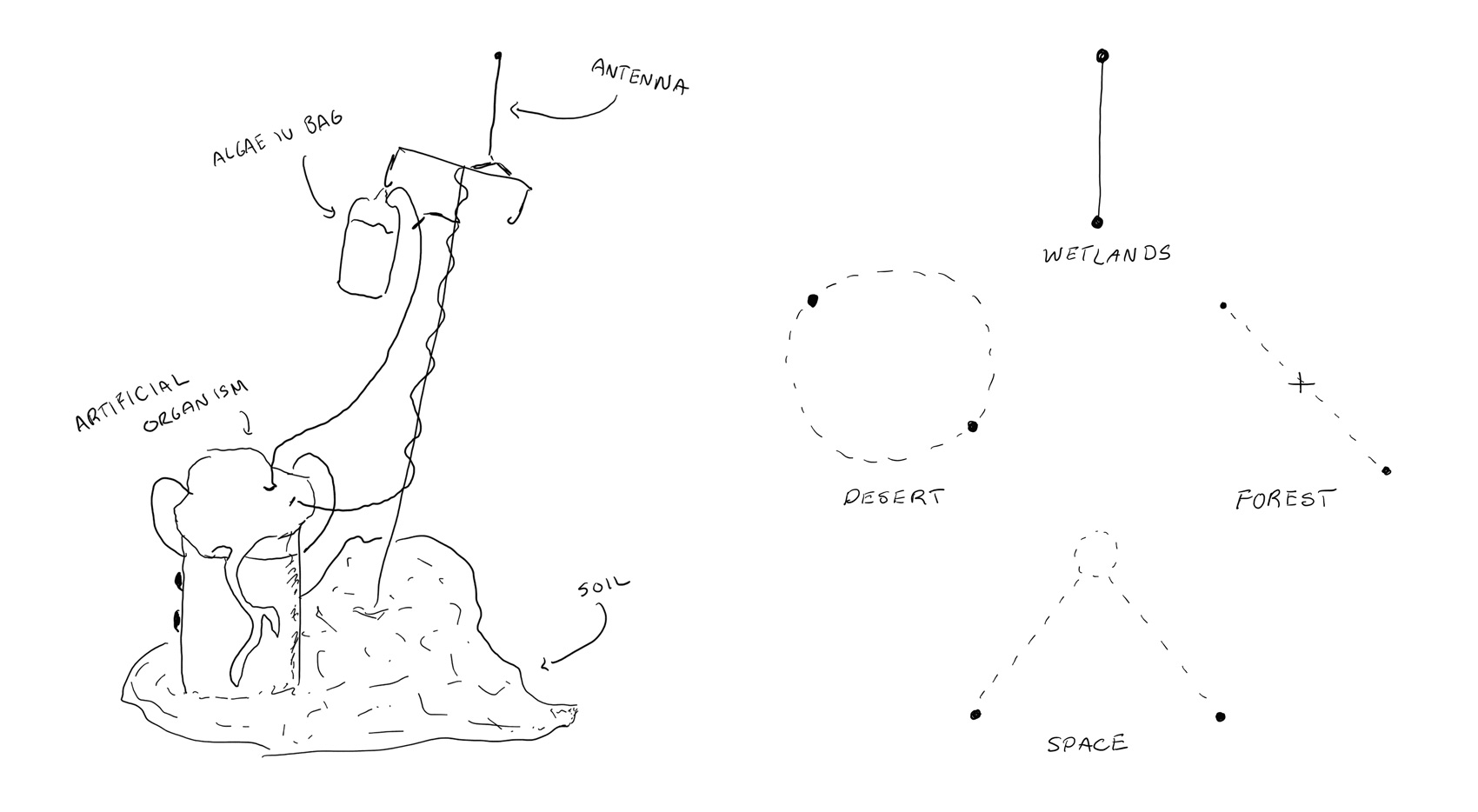
Figure 1: Concept sketch of a Teletrophicate(s) organism (left), Speculative design diagram (right).
To harvest anaerobic microbial energy, we built several microbial fuel cell prototypes. These fuel cells rely on ultra low-power electronic devices that “step-up” and store low voltages produced by the metabolic pathways of the microbes. The prototype organism contains three “organs”: a microbial fuel cell that generates energy for the organism through the decomposition of organic matter, a wireless transmitter intermittently powered by the fuel cell, and an algal tank that contains the nutrients required for continued life. The metabolic decomposition within the fuel cells results in a small amount of ionic energy which is stored within circuits built into the organism. When available, this energy activates the transmitter allowing communication between the organisms. The odds of establishing communication are low. Microbial energy outputs small micro-voltages and requires hours to days to reach sufficient power levels. Since their energy is directly linked to microbial growth (which will be expanded upon further into this essay), their energy reserves grow as they exhaust more and more matter. Therefore, as they become closer to death, their communication becomes more desperate (frequent), resulting in an increased chance of reaching the other organism. If the two are able to communicate, they send a request to “bloom”, releasing algae into the others cell continuing the cycle through replenishing matter. Their life cycles are intertwined, dependent on the energy produced from the ecosystems they inhabit.
Microbial Energy
In opposition to extractive methods of energy “creation” (as we know from the second law of thermodynamics this is just a transformation), energy harvesting gathers energy from sources that are in the processional rather than fixed. Coal, for instance, is fixed. It’s energy is the product of a long geological period, when we use it we are releasing that energy. Processional energy is that of live processes such as metabolism, wind, or photosynthetic energy. Microbial fuel cells harvest energy from anaerobic microbial communities. These can be in dry or wet soil, in our case we are examining wet soil, or mud. The process of harvesting energy from mud involves the creation of specific electrodes capable of hosting microbial colonies. A basic electrode set-up demands both an anode and a cathode, earth capable of conducting current through a circuit. Our electrodes are made of a fine steel mesh and activated charcoal. The activated charcoal is ground up and crushed under a heavy load to make a charcoal disc (Figure 2) secured by trace amounts of epoxy. The charcoal provides a growth bed for the anaerobic microbes while the steel provides a conductive, non-rusting, skeleton to siphon energy down a copper wire.
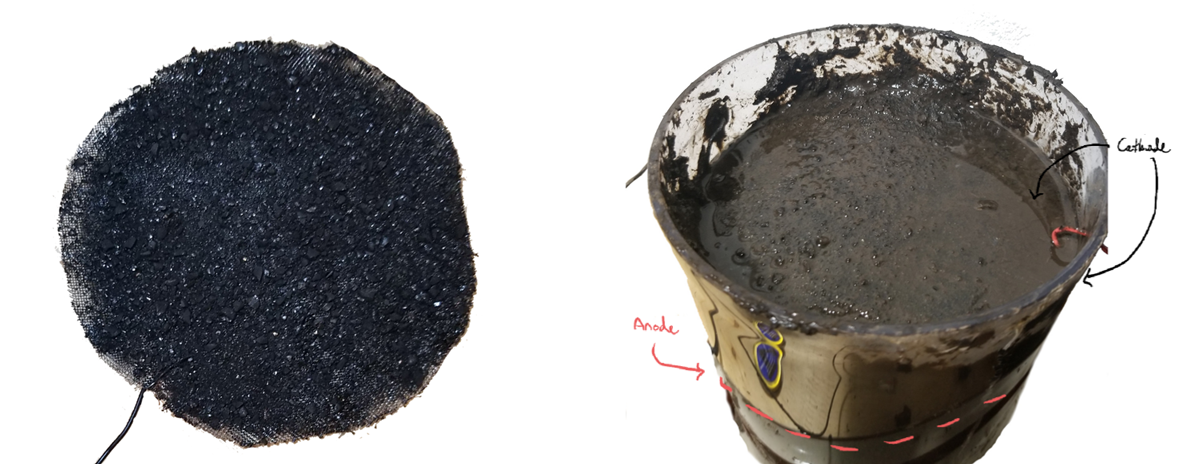
Figure 2: Stainless steel mesh and activated charcoal electrode (left), electrode placement within MFC (right).
The anode is placed within the mud and the cathode is placed slightly above it and needs to be exposed to air. As the biofilm grows on the anode, the anaerobic microbes metabolize decaying matter and produce an excess of protons. These protons are drawn to the cathode where hydroxylation occurs, consuming electrons.The creation of electrodes within the biofilm, and their consumption on the cathode produces a potential. The electrons travel towards the cathode (potential) and can be harvested along the way.
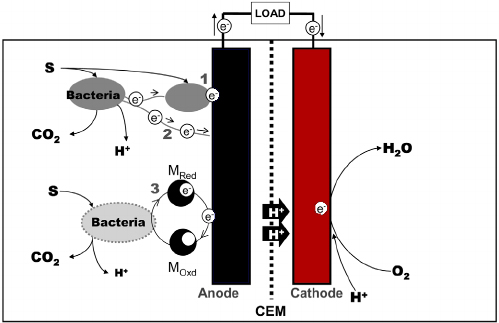
Figure 3: Scientific diagram for the metabolic process of a microbial fuel cell. © In S. Kim
Microbial fuel cells fall under the category of ultra low energy harvesting, a relatively new field of research. The field centers devices that can power themselves at energy levels as low as 20mv. Most modern electronics require at least 3300mv at a specific amperage to maintain power. To work with such low energy levels the components had to themselves run on low energy, meaning up until recently the creation of a circuit sensitive enough to harvest low energy sources was impossible. To actually harvest microbial energy several components are required: a 1:100 transformer, a DC/DC step up converter, an array of capacitors, and a supercapacitor, all of which must be ultra-low energy models. We built our power management circuit (PMC) to harvest and store the bulk of the energy in a supercapacitor. Since the PMC runs on only 20mv, and any small fluctuations can reduce stability in the electronics, several capacitors are used to store energy and smooth any fluctuations. The initial 20mv is processed by the transformer and stored in the first two capacitors. Once enough energy is stored, the DC/DC step up converted is switched on and energy flows through it (still charging capacitors along the way) and gets stored in a final supercapacitor at 3.3v. This 3.3v is used to power a microcontroller for transmissions once an appropriate amount of energy is stored. As you can imagine, the process of storing enough converted energy from 20mv to 3.3v takes a long time, our prototype takes around 12 hours for a full charge.
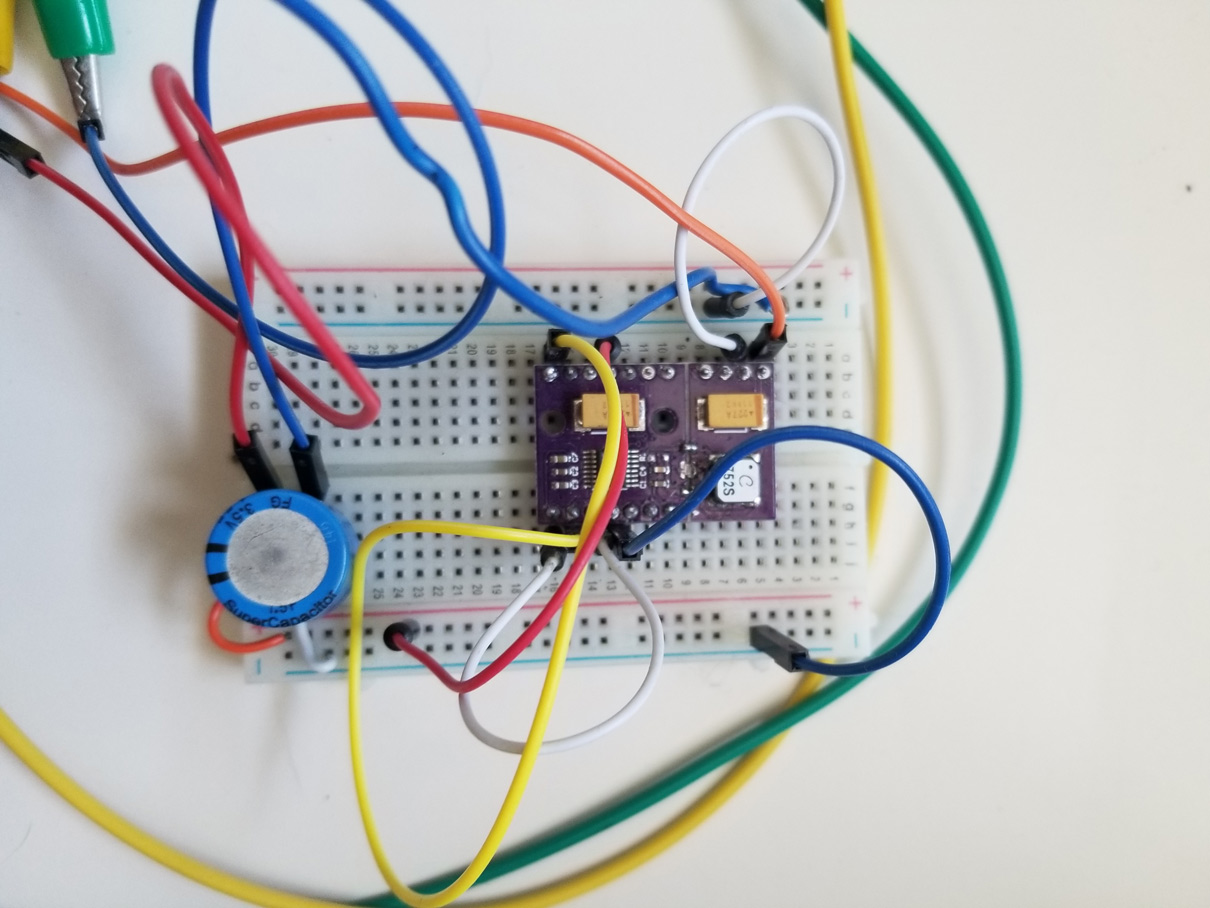
Figure 4: The power management circuit (PMC) prototype created for Teletrophicate(s).
As the objective of this paper is not technical, I'll take this time to wrap up our specifics with a graph outlying our voltage yields. Microbial fuel cells can vary in range between 20mv to whole volts under the right conditions. Many of the higher voltage cells are laboratory grade. To achieve better DIY results we took a sample of extremely old and healthy swamp mud from Mont-tremblant National Park and combined it with bonemeal, a nutrient anaerobic bacteria thrive on. Microbial fuel cells additionally require a period of growth to reach their potential, which is of course intertwined with biofilm growth. Our results are within Figure 5, measured over a span of 30 days. Since the energy stems from live culture, its subject to ebbs and flows. It reached around 510mv at its peak, and dropped down to around 100mv on day 18 due to environmental stressors.
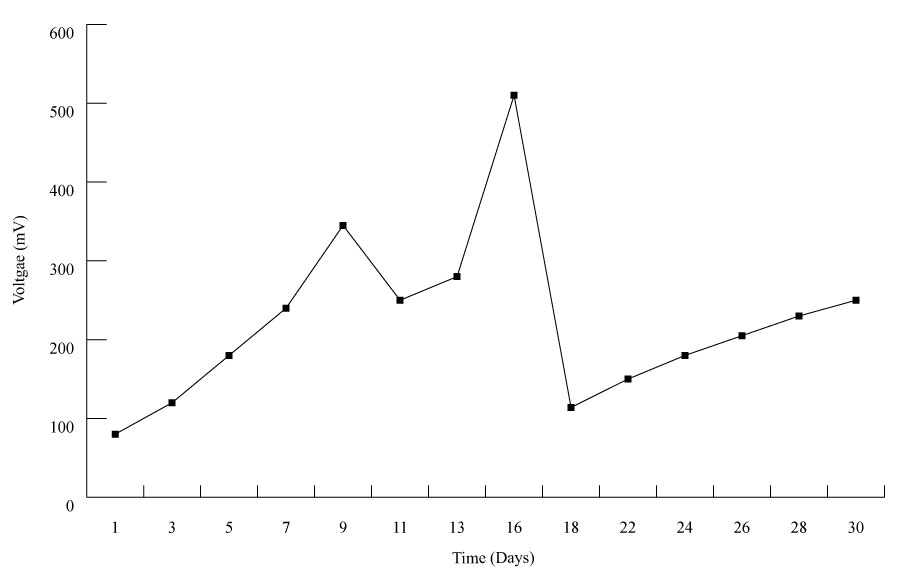
Figure 5: MFC voltage (biofilm growth) over the period of a month.
Ecologies (Deconstructing Nature)
To critically examine any element of this project, we need to understand the relation between humans and nature, and how these concepts are formed. The definition of natural is messy. It is often defined as a foil to human socio-cultural practices. We often do not see ourselves as a part of “nature,” nature is a place external to human culture (and cities), a place to visit, an escape. It’s important to note this is not the case for all cultures, to avoid confusion we will use the term “moderns,” a term coined by Bruno Latour that roughly defines moderns as humans that have become increasingly isolated from nature through their use of the sciences and technology (13). The hard sciences rely on the operation of reduction and absolution, but there is no neutral narrative. The process of energy harvesting is inherently political. Energy and heat have a history intertwined with the industrial revolution and capitalism. To explain how the hard sciences create political problems, Didier Debaise borrows a term from Stengers, the Galileo Gesture (Debaise, 13), a form of localization that occurs through the stripping of an idea from all it’s relations. It’s coined after Galileo due to his use of sterile lab conditions to reproduce physical laws. It is in essence, the reduction of an idea to a single, isolated unit. This gesture has a dangerous association with capitalo-centric methods of extraction that are harmful to global ecosystems as it attempts to view elements within natural systems as quantized units that do not affect other elements within a system (ie. a tree in a forest). A property “ had to be selected within that world, then isolated and purified. In other words, it is, with respect to its existence as an experimental object, radically dependent on our interests and practices” (Stengers, 191). Debaise suggests this gesture is used to extract all the superficial qualities from a body and transform a body into quantified form that can be manipulated experimentally. Take a localized view of coal: it removes all the exterior relations from an object and reduces it to its mathematical relation to energy. Under localization a forest is no longer a network of connected species, but quantified parts. Tobe quantified the forest must be immediately present, it must be a discrete element. The forest becomes a numbered list of species, dimensions, and material properties. The tree is defined by its length, weight, age, and density, but no longer by its relations. By removing a body's relations we ignore a link of casualty between other forest bodies. The strip clearing of a forest for thermodynamic energy (ie. burning the wood) is measured by its energy output. Its exclusion of relational properties means any cause and effect produced by such an extractive act is not considered. If an ecosystem is not quantifiable, how do we define it? It may seem that an attempt to define natural ecosystems is counterproductive in dismantling the culture of moderns. This project seeks to disrupt that narrative by highlighting the importance of deconstructing harmful narratives and speculating on alternative methods of living with and within these natural systems.
The reason why it is so difficult to concretely define nature is due to its abstract form and its historically charged association with the colonial definition of wilderness. The concept of nature, or wilderness, produces a false dichotomy between the human and natural systems. Nature isn’t an object or idea, but a system. Ludwig Bertalanffy, the mind behind general systems theory, opened a gateway to exploring ecology by defining systems as “a cohesive conglomeration of interrelated and interdependent parts that is either natural or man-made… Changing one part of the system usually affects other parts and the whole system, with predictable patterns of behavior”. The gesture of localization attempts to isolate each of these parts, quantify them, and extract them. To understand how systems truly function it is necessary to holistically examine the parts, they cannot be explained individually as they exceed the sum of their parts. Many philosophers, biologists, and computer scientists have attempted to explain this phenomenon (emergence), and throughout our research many of these minds returned to a single mathematician and philosopher, the author of Process and Reality (1912), Alfred North Whitehead. His method for conceptualizing systematic processes is helpful when we begin to think about nature as something we experience, as subjective rather than an objective. The move from material to subjectivity can be difficult to grasp through the language of the moderns. How can nature be an experience? How could anything object be an experience? Whitehead’s blend of material and immaterial discourse bridges the gap between experience and difference. He states that the qualia (individual instances of the subjective) are made up of actual entities and abstract entities. Within the framework of the moderns, it is easy to imagine something as atomistic, indivisible, as that is the root of localization. This atomic, indivisible form is the actual entity. In relation to experience, the actual entity is an occasion of experience. Occasions of experience cannot be divided, they are the most fundamental subjective experience, a unit of experience that does not overlap other experiences. He states that to conceive of an idea the mind must identify that idea. To do so the mind relies on all it’s previous occasions of experience. Under this lens the idea of nature would be all its perceived parts dressed as occasions of experience within the mind. Moderns conceive of nature as a monadistic whole, that is the only way it can be quantified and identified. In opposition to ideas as atomistic monads, a term we borrow from Leibniz meaning “windowless” absolutes, Whitehead suggests the experience of nature is a “composite of indefinitely many occasions of experience” (48), all connected to one another through different points in time, different occasions of experience. Connectivity is crucial. Even if the units are indivisible, they rely on relational bodies, these relations cannot be separated from the actual entity without casualty within the system. The idea of nature is an abstract interconnected system of indivisible occasions of experience, but they are not “windowless” and instead “all window”. This principle is deemed Whitehead’s ontological principle - that whatever reality pertains to an abstraction is derived from actual entities. Systems theory operates in tune to this idea, complexity within systems manifest on a hierarchical (abstract) scale through smaller units (Theise & Kafatos, 12). So, when we discuss harvesting energy from ecological systems we are not attempting to localize a source of power, but instead allow natural systems to remain interconnected, working in unison with this connection to harvest energy. For microbial fuel cells this system manifests as the soil, the microbes, the water, the sun, the matter, death, decomposition, and transference of biochemical energy. Whitehead’s philosophy provides a window into how we may define ideas in relation to material substances (ie. trees, mud, waters, etc) but more importantly it allows us to conceptualize the relation between material and immaterial, between substance and idea.
The casualty related to Whitehead’s ontological principle extends into the realm of “mind”, boundaries, and information exchange. The ideas of the moderns are formed by and form the occasions of experience pertaining to nature. By localizing nature, moderns form an idea of nature as static and reducible. This internal ecology of ideas (occasions of experience) govern how the moderns act on nature, leading to extraction that disrupts natural ecosystems. Bateson refers to this property as ecology of mind. Ecology of mind “is a new way of thinking about ideas and about those aggregates of ideas which I call "minds" (467). He goes on to explain the mental world, the mind, is not limited by the skin. By this he refers to the world of information processing, a world inspired by cybernetics. What he calls “levels” of biological order, cells to tissue, tissue to organs, organs to organism, and organisms to ecosystem, are produced by a feedback system of information exchange. These levels interact with their environment by experiencing it and acting on it, producing new experiences and new arrangements. Previous to the 1960’s, the time in which he wrote segments of Steps to an Ecology of Mind, Nobert Wiener had released his work Cybernetics: Or Control and Communication in the Animal and the Machine. As a mathematician, Wiener outlined the principle methods for which organisms interacted with their environments through cybernetics. This method proposed organisms change their environment by acting on it through feedback loops. Bateson extended this action to the realm of the mind by adapting cybernetics to Korzybski’s phrase “the map is not the territory” (455). The territory of a map is defined by differences conceived within the mind, they are the points in which a uniform body is divided into boundaries. These boundaries are localized, they do not truly exist within natural systems. The same may be said for cells, tissue, organisms, and ecosystems. Their boundaries are constructed and put in place to help moderns localize ideas. Humans are not separate from natural systems, the boundary between them is the territory on the map. Their bodies, our bodies, are constantly in communication with other bodies in the natural environment, we are in fact inseparable from natural ecosystems, we are as much a part of these ecosystems as any other agent within them. Our ideas are causally linked to the health of natural ecosystems (and to our own survival), “the individual nexus which I call ‘me’ is no longer so precious because that nexus is only a part of a larger mind” (471). Bateson realized the difficulty in accepting this principle, he knew it went against the culture surrounding the moderns, and suggests “the most important task today is, perhaps, to learn to think in a new way”.
Techno-Geographies
One of the telegraphic inspirations for Teletrophicate(s) was research done on ecological sensor networks. Ecological sensor networks have a variety of foci and may or may not be self-sufficient. Most of the sensor networks we studied were selected due to their use of MFCs or soil-microbial fuel cells (S-MFCs) as an energy source to power intermittent sensors within ecosystems.Teletrophicate(s) doesn’t include sensing in its current iteration, though it isn’t precluded from being added in the future, possibly as a method for giving the organism agency in sourcing its own energy. Even though it doesn’t include sensing, many of the MFC models we research during the creation of our prototype were designed to intermittently transmit data back to research stations. Just as with our MFC, due to a reliance on energy produced by the environment, sensors collect data within the ecosystems and transmit the data to researchers only when power is available. Since they must rely on residual power produced by ecosystems, these transmitters often take between 7 hours and a day to transmit a relatively small collection of data packets (Yang, pg. 90). These networks allow the collection of ecosystem data (air purity, water pollution, etc.) while continuously harvesting their own power. One example of an energy harvesting sensor network is a floating system of sensors powered by MFCs produced by Schievano, et al. This network harvests the entirety of its energy from microbial communities living in the water below the device, the walls act as an encompassing cathode. By positioning themselves within a body of water the MFCs are able to produce more energy than a dry counterpart would, allowing them to transmit water pollution levels more frequently.
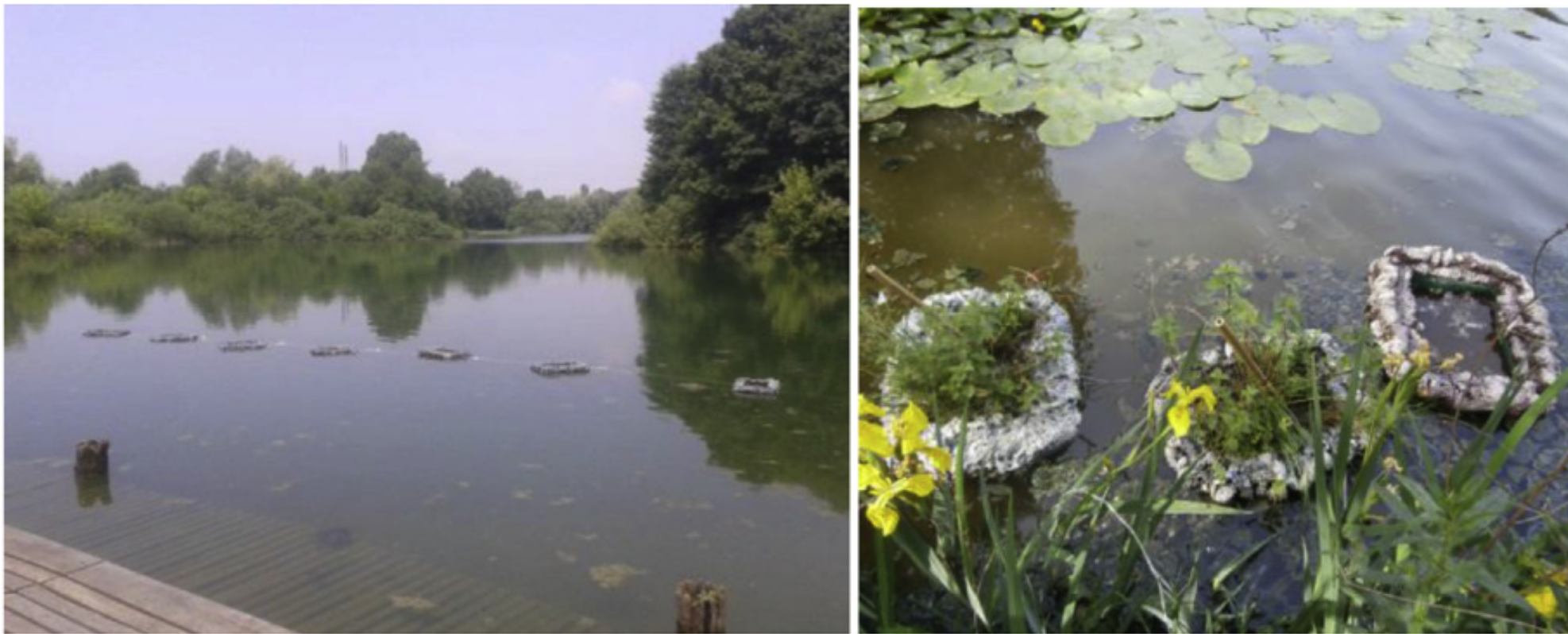
Figure 6: Floating MFC-powered sensor network created by Schievano, et al.
Throughout our research we stumbled on a variety of transmitters that have been tested for low-energy, long range applications. For Teletrophicate(s) we used the ESP-01 transmitter, a wi-fi module that is popular in the makers’ community. Our power management circuit stores available energy within it’s supercapacitors, and when they have enough power, they can power the transmission module for around 30 seconds (Yang, 90). The ESP-01 has a few subcategories, we decided to work with the ESP8266-01, a very affordable WiFi/Bluetooth module that can be programmed through the Arduino IDE. This hardware was selected since it's important for us to work with open-source softwares and technologies to open up the possibility for other enthusiasts to explore microbial fuel cells and network communications at a lower cost. We scripted the ESP8266-01 to post a small packet of JSON data to a nearby WiFi router, which in turn routes the data to one of our servers and allows us to display and record received messages from the organism. This design was intended for urban proximity - if the organism was to be remotely located a long range radio transceiver would stand in for the WiFi module and allow the organism to use existing infrastructure.
Sensor networks can function as a method of localization and digitalization, or what Jennifer Gabrys deems “programmability”, which affects the semiotic formation and operations of the environments they inhabit. We will return to the issue of programmability shortly, first let's examine the use of speculative design as a method of rejeuvenating damaged ecosystems. Using a combination of MFCs, robotics, and sensor networks, the artist Ivan Henrique created a swarm of energy harvesting bots that clean remediate bodies of water. Each bot within Caravel has a hexagon frame that allows the "swarm" to connect and form larger bodies when needed.
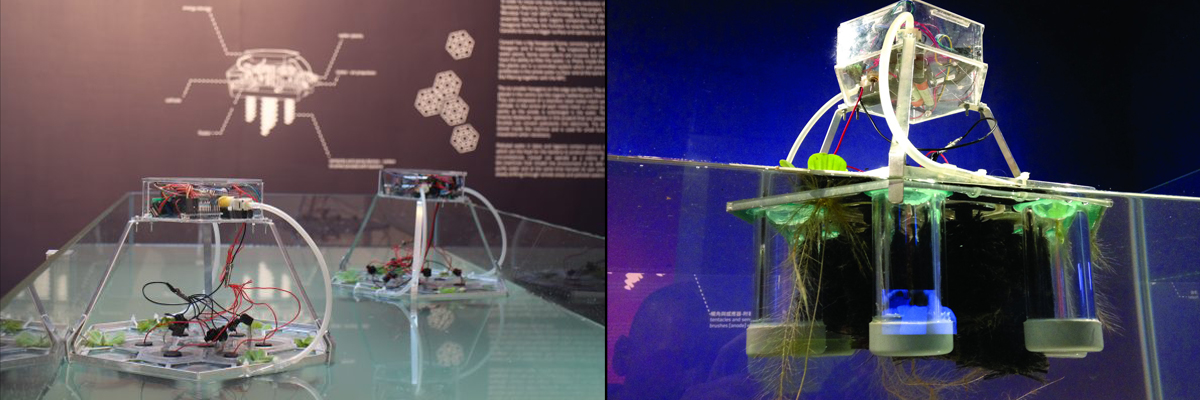
Figure 7: Environmental MFC Bots from Caravel. © Ivan Henrique.
"Polluted water in lakes and lagoons contains various chemicals, which are the food for the bacteria to produce electricity. In these circumstances, Caravel can operate as a colony of filtering bio-machines that inhabit the environment to be able to clean, purify water and at the same time harvest its own energy while slowly drifting through remote areas and polluted waters in cities" (Henrique). Speculative design like Henrique's can help us design symbiotic systems that exist within natural ecosystems that ease the accumulated damage of extractive processes. While sensor systems can be symbiotic, they can have unintended consequences that reinforce localization through programmability.
Programmability
Programmability is the action of programming the Earth. It treats environments as “not necessarily [the] extensions of humans, but rather as new configurations, or “techno-geographies” that concretize across technologies, people, practices, and nonhuman entities” (Gabrys, 4). Gabrys is no stranger to Whitehead, her formation of techno-geographies is directly related to his ontological principle, nor is the idea of a techno-geography dissimilar from what Bateson was communicating in his “ecology of mind”. Gabrys’ techno-geography specifically critiques the localization of data within environments and its reductive rhetoric of data “dividuation” through the ubiquitous computing narrative proposed by Mark Weiser and IBM’s SmarterPlanet. SmarterPlanet was a hypothetical “system of systems” aimed towards networking digital devices across the planet. It stirred up visions of “a whole ecology, an information environment that’s massively connected… [a] huge digital creature” (6). It may already be apparent that this type of network is focused on the human through their use of digital technologies. It does not include humans as a part in the ecological aggregate of planet Earth, it instead dividuates the planet into humans and data. The ubiquitous computer paradigm was “designed to help humans, not harm them” (7). Programmability subjectifies data by not only curating its role in the environment, but by disregarding how energy is spread across systems. Humans are biological systems, their boundaries defined by creating an exeriority through organs (ie. epidermal and intestinal). The technological appendages moderns create to extend their capabilities, act as an extension of their bodies. Just as their bodies act upon external environments, so do their technological appendages. Programmed environments, such as sensor networks, draw attention to the concresce - the growing together of, the formation/reformation of their exterior membranes - between technology, data, sensing, and culture via predefined methods of operability. By programming this operability, energy can operate above sustainable levels. Our bodies rely on nourishment through food grown within environments, to grow this food we need to interact with natural environments to transmute nutrients into digestible matter - we must grow our food. Our technological appendages are freed from this responsibility and often extract their energy in non-sustainable ways (lithium, oil plants, etc).
Programmability is political. Programs built through code and hardware have a set, concretized method of operating. Those responsible for programming these operations are enacting a subjective lens on the environment they are placed in. We are not proposing that the environmental researchers creating sensor networks have ill intentions. We are instead proposing that the datafication of environments through these sensor networks produce ecologies of data influencing our perception of the systems they inhabit.
“In this way, sensors might also be understood not as detecting substantialist external phenomena but as contributing to inventive processes for making interpretive acts of sensation possible… The concrescences that come together here might be understood not just as scientists- devices- flora- and- fauna but also as relations that individuate and are individuated through data sets and algorithmic processes, across sedimented environmental effects, and through responsive modes of environmental action.” (Gabrys, 32)
How this individuation occurs may be more clear if we think of this new mental ecology as a milieu, a concept denoted by Canguilhem and Simondon as the way in which an organism uses knowledge and technology to in-form and form their own environment. The milieu is the sociological version of a cell wall, a boundary between exterior and interior. It is the territory drawn on the socio-cultural map we inhabit. The lines that make up the map are drawn by our techno-geographies, our relation to technology, self, and environment. The definition of a milieu is not one that equates to isolation, the key feature of a milieu is its function as a communication “ether” between body and environment (Canguilhem, 100). Simondon states this communication allows being and becoming, formation and reformation (Andrade, 10). An milieu acts as a space of transversion for information and energy exchange, for new phases of being (or ecologies of mind) to emerge. The programmability of sensors inside environmental monitoring networks grant the designer an agency in what data becomes important. By selecting what data may be important for quantification, a milieu is formed between the sensor body, body of the datafied organism, and the body of the designer. How these milieus are constructed is up to their designers. There is an inherent danger in quantifying natural spaces, even if their end is to montier and aid the systems during crises. By reducing and ioslating environments to discrete data points, complexities of interaction within the ecosystems are ignored, leading to shifting perceptions of the spaces by those monitoring them.
The map is not the territory
Let’s step back for a moment. Teletrophicate(s) is a research-creation project that examines the politics of energy, the formation of interior (“us”) and exterior (“nature”) environments, low-tech solutions, and speculative design. So far we have discussed a great deal of boundary formation and environments. Before continuing, let’s reformulate why so much philosophy is required. We know from Bateson and Whitehead, that the human is entangled within natural systems - they do not exist apart from one another. We humans are complex organisms made up of hierarchical “levels” of boundary formation. Molecules become cells, bound by their membranes; cells become organs, assigned specific roles; organs become the organism through a complicated network of relations. We are a complex system, our consciousness is emergent from that system. Our complexity stems from the relations between all of the parts that make up our body, in this we are not alone. Bacteria share our bodies, their interactions with our digestive organs produce energy for us to consume. Before we have even considered our relation to our external environment we can see what makes “us” is an interconnected hierarchy of relations between the different biological “levels” (Bateson, 465).
If all the atomistic parts of the Earth, both living and nonliving, are entities that form relations, we can begin to see that we are the ones that set boundaries.
“The difference between living and non-living occasions is not sharp, but more or less, so the distinction between an enduring object which is an atomic material body and one which is not is again more or less. Thus the question as to whether to call an enduring object a transition of matter or of character is very much a verbal question as to where you draw the line between the various properties (cf. the way in which the distinction between matter and radiant energy has now vanished)”. (Whitehead, 109)
It is easier for us to conceptualize ideas if we have concrete forms, something a boundary provides. This is exactly what the moderns achieve by localizing nature, by setting its boundary in a reduced form, by stripping it of its relations in an attempt to examine a pure substance, they are drawing boundaries. What do we mean when we say “the map is not the territory”? Without interference, all of the actual entities in this vast system we may call the biosphere, exist in territorial form. Moderns are the ones who draw lines on the map, the ones that separate territories by drawing boundaries around them. We are not proposing membranes do not exist without human intervention, a cell membrane is still a membrane. What we are proposing is that these natural membranes exist in a much more fluid form than we imagine. Systems exist through the relation of their parts, it is the relation, the experience, and the emergent, abstract properties that are lost with localization and lines.
With this in mind, we can begin to imagine how the concept of “us” is involved in the formation of environments. Remember, “the mental world, the mind, is not limited by the skin” (Bateson, 461). We perhaps draw the largest boundary on our own bodies, adamantly taking the stance “I” am separate from my environment, or more specifically, from nature. To draw our bodies separate from our environments, we must of course also define the environment as separate, suggesting we create environments. It is exactly this environmental formation that leads to the creation of techno-geographies. Since we decide what data is being extracted from an ecosystem, we localize certain data points to be transmitted via microcontroller. The operability of this program must be reduced to discrete code, the data points it transmits creates an image of an environment that we interact with. If territories exist without boundaries, we may also say a myriad of relations exist. While creating environments through either programmability or localization, these relations are removed. Within the scope of mental ecologies we can now see the relation between technologies and culture. Guattari suggested there was an emerging age characterized by a “polyphony of machine voices along with human voices, with databanks, artificial intelligence, etc.” In addition, “New materials made to order by chemistry (plastic matters, new alloys, semi- conductors, etc.)” would take the place of previous materials. In this age, where time and experience were shifting, “the temporality put to work by microprocessors, enormous quantities of data and problems can be processed in miniscule periods of time.” With the new machinic subjectivities that he anticipated would arise, as well as the “indefinite remodeling of living forms” that would occur through “biological engineering,” he imagined there would be “a radical modification of the conditions of life on the planet, and as a consequence, all the ethological and imaginary references relating to it”. (Schizoanalytic Cartographies, 11)
Through the use of sensing technologies, we have a responsibility to be aware of the techno-geographies we may create. The programmability we inject into ecosystems has the potential to change our relationship to the systems we inhabit, influencing our political and material lives. There’s a certain danger in ignoring the causality that comes along with localization of systems. By assuming we have control over nature we produce dangerous byproducts. Our techno-geographies go even further, into the realm of capital, energy, and labor, and entanglement Guattari would title a “semiotechnological arrangement”. These arrangements trace a materiality's origins to “labor, production chains, and the chemical components that compose the technology”. (Parikka, 97)
Capitalism, Bio-Time & Blooming
As we have shown, the technogeograpies we create are dependent on the socio-cultural bubbles that surround us. Following Guattari’s concept of the semiotechnological arrangement, the ever looming Fordist bubble of Capitalism is inseparable from the technologies we create and use; it’s tendrils are pervasively woven into our daily lives. It’s not uncommon within Capitalist discourse to examine labor and profit in regards to energy. The energy within soil has been used as a technology long before digital media. The garden or farm is an energy transmuting system, whether that energy is present as sunlight, ionic soil, or sugar. Parikka states “Marx was very aware of the relation between the soil (advances in agriculture) and capital. Indeed, we too should be aware of the relation of the bios to capital, which extends to what Jason W. Moore has called 'peak appropriation’ described as ‘the long history of enclosure and exhaustion of coal seams, oil fields, aquifers, and peasantries across the space and time of historical capitalism’” (97). When we think of labor it is easy to let the mind affix it to “human” labor. If we were to do this we would fall into the same trap as the moderns have fallen into creating a dichotomy between human and natural. Then we must ask, does the biosphere produce labor? If you are to look anywhere within your immediate environment you can see the fruits of its labor. They may not be in the raw form of materials such as wood, but instead as energy transmuted into forms of plastics, minerals, or metals. The labor of the biosphere is often hard to miss for it occurs on a different time scale. The minerals (ie. lithium, cobalt, neodymium, etc) used in our electronics take millions of years to form, as does the oil and coal burned to harness the energy that power our devices . The near spontaneous release of energy and the immediate acquisition of materials extracted from nature give off the illusions of cheap resources. In the Fordist sense, these resources are cheap. We can easily extract them from the Earth and profit off their abundance for a low immediate cost. Truly, this cost is anything but low. Those millions of years of compound pressure that form minerals are temporally expensive, as many standardized extractive processes are. Temporality is infused within the materiality of the Earth but excluded from our mental ecologies. Through our media we have begun to think on a more digital timescale. The internal clocks of these devices run on much faster than any time scale humans are used to. We have been promised, and come to expect, the computational abundance of our devices; we can search the web for any fact we may need in a matter of microseconds. Are these searches labor free? Each search relies not only on the temporal labor infused into the materiality of its components, but the temporal labor infused into the energy itself.
Capital centric worldviews seep into the aquifer of mental ecologies. Their disregard for natural systems at the price of profit lead to oil spills, toxic extraction, and pollutants that permeate the veins of ecosystems. Therefore, there are certainly many steps we need to take to overcome Capitalist mental ecologies of energy and materiality, art creation provides us a useful window into the disruption of editing ecologies. Within Whitehead’s ecology of organism he states “actual existence is a process of becoming... and re-becoming is a creative advance into novelty” (Whitehead, 222). It is our reformation of the mental territories, our boundary deformation and reformation that allow us to adapt and change our mental ecologies. The most intuitive way to do this is through experience itself, ie. the visual experience of a novel presentation of the relation between materiality and energy. Teletrophicate(s) seeks to do just this, as does the YoHa art project’s Coal-fired computers (Figure 6). Coal-fired computers is an installation that visually displays the energy requirements of modern computing through the live burning of coal. Not only does the work visualize the materiality of the energy consumed by computing devices, it displays the material affect the energy has on living bodies (as human lungs), mapped through a database record of miners' lung disease. The “clouds” we use daily are not immaterial, their materiality relies directly on the Earth, many still powered by coal and oil. “Data processing needs energy, which releases heat, of course. Data demands their ecology, one that is not merely a metaphorical technoecology but demonstrates dependence on the climate, the ground, and the energies circulating in the environment. Data feeds of the environment both through geology and the energy-demand. What’s more, it is housed in carefully managed ecologies. It’s like the natural elements of air, water, fire (and cooling), and earth are mobilized as part of the environmental aspects of data” (Parikka, 24).

Figure 8: Coal-fired computers. © YoHa
In the same vein, Teletrophicates(s) acts as a visual representation of the materiality of telegraphics. Tele-, meaning distance, is a primary theme in our research. The distant computation of cloud servers is an extremely expensive process. Teletrophicate(s) reframes the modern timescale of computing from a digital timescale (computations per second) to one of bio-time. We propose the term bio-time may be used as an alternative frame of reference for the energy consumed by digital devices. Currently our production of batteries is tailored to the demands of digital devices, what if those batteries relied instead on the real-time generation of energy from ecosystems? Using real-time energy means our devices cannot run on coal, oil, or lithium as their temporality is embedded with what Parrikka would call deep time, the relation between temporal networks not visible and the material substrate. The microbial fuel cells used within Teletrophicate(s) are completely insufficient for the modern demands of electronics. They produce enough energy at 3.3v to power our transmitter for a whole 15s only after roughly 12 hours of energy harvesting. Teletrophicate(s) aims to disrupt the energetic demands of modern technologies and contrast their extractive process through visualizing the time scale required to meet (in part) their demands in real bio-time. Under bio-time, we return to Teletrophicate(s) conceptual pillar of blooming. The organisms only use their stored energy when the environmental conditions are ripe. While waiting patiently it spares every last mv of energy as if it were a drop of water in the desert, preparing for its sparse bloom.
It is difficult to imagine our society reliant on bio-time, we simply could not meet the current energetic demand. What does that say about our energy usage? I believe we have learned to live off an unsustainable amount of energy, one our natural systems can’t keep up with without extraction. Even if we were to create a vast infrastructure of sustainable energy-harvesting networks, the process of producing the circuits required is extractive in itself and may fall victim to Jevon’s paradox - a paradox that “occurs when technological progress or government policy increases the efficiency with which a resource is used (reducing the amount necessary for any one use), but the rate of consumption of that resource rises due to increasing demand” (Bauer, 5). The most effective way to reduce our energy demands is not to techno-fix the problem, but adapt our lifestyles to require less energy.
Techno-fabulations
Techno-utopian fabulations, or “the belief in technology -- conceived as more than tools and machines alone -- as the means of achieving a 'perfect' society in the near future” (Segal, 10), correlate with techno-capital and sustainable rhetorics of control over processes and energetic flows found in environmental milieus. Through ubiquitous technologies that are designed and scattered around built and natural environments, the premise of IoT, and recently energy harvesting research, is to facilitate the aggregation data for better energy management and climate change through environmental sensing. Here, an unfortunate paradox holds true; first through the ever more efficient manufacturing of technological devices and secondly through their power management architecture, more devices can be, and will be, produced and utilised at the same total energetic consumption of the production of their newly outdated versions. Echoing the Jevon’s Paradox found in environmental economics and Moore Law’s found in the ever increasing transistor efficiency found in microchips, a possible environmental “rebound” occurs when hypothetically sensing that same environmental milieus, where, as Benjamin Bratton points at, the accidental technological megastructure enmeshed with heavy computation for heavy data analysis, intensive energy consumption and material production, participates in the subject of climate change that the techno-utopian projects seeks to study. Propelled by R&D initiatives and ever increasing manufacturing of ICs, development boards and sensors, the quest for “becoming environmental of computation” (Gabrys, 9) relies on the same slow violent and off-shore production of technological devices, e-waste management, arguably waste colonialism (Liboiron, 34), and global transportation made possible through capitalist and late liberal systems of interconnectedness based on early colonial expansion and international markets. Technological efficiency thus arguably correlates with these systems of power, accelerating and ever more relying on rapid prototyping and affordable international manufactures. The material historicity of each sensing device is thus ambivalently embodied through its promising technology.
Teletrophicate(s) is thus at the intersection between false efficiency and off-shore production through site-specific entanglements. With the energy harvesting board assembled, produced and shipped from a Chinese manufacturer through an international mailing service, its construction embodies a paradoxical essence. Its energy harvesting architecture, depending on slow microbial processes found in its mud container, contradicts the accelerated speed of its technological and material-discursive production. By tuning into alternate temporalities, or zoe-centered (Braidotti), Teletrophicate(s) slows the contemporary expectations for fast pace environmental interactions into non-anthropocentric contemplation and wonder. There is thus a “recalibration of the senses” needed to transform our world views entangled through our climate urgencies to which, Raqs Media Collective argues, “we cannot conceive of another mode of production, another set of social relations, another ethic” (114). Engaging with matter in that way is primordial to shift our perspectives over mattering and being affected by matter, and repositions anthropocentric paradigms into the more-than-human realm, or a certain “material complicity” (Lange-Berndt, 13).
We are amidst a politics of heat, a politics of energy, and a politics of materiality entangled with our telecommunications infrastructure of our digital devices. The energy demands of our information era are not created at random, they are produced and reformed through capital-centric mental ecologies. It is through our definition of nature that these expectations arise: "[to] lay bare the process by which the city transforms nature into second nature, in the process making nature appear as a resource for the city's consumption” (Wark, 29).
Conclusion
In sum, Teletrophicate(s) may be considered an exploration of socio-biological ecologies formed and reformed through the deconstruction of nature, windows of abstraction, ecologies of mind, and techno-geographies. The project dissects how telecommunications and information technologies are entangled with our daily lives, how they act as an extension of ourselves, our bodies, and our ecologies. We are not separate from "nature", we are part of a larger, relationary system of living and non-living. As agents inside this system, it is crucial we become aware of the parasitic, extractive methods that modern capital-centric culture enacts. Pairing energy and ecology, we need to adjust our notion of energy standards, extractive energy processes are not cheap, they disrupt millions of years of geological labor. Being aware of bio-time may help us avoid techno-fixing our problems and heal the interwoven tendrils of our techno-geographies that currently rely on a deep time materiality. Lastly, speculative design can not only help clean damaged ecosystems, but can act as an method for experiential understanding of abstract concepts. Teletrophicate(s) aims for experientiality through the visualization of bio-time via real-time microbial energy harvesting. It's energy harvesting reveals the "slowness" of biospheric labor, illuminating the deep time/energy relation within the materials we extract, as well as deconstructing the illusion of immaterial telecommunications through the organisms reliance on energy (& materiality).
References
Andrade, Novaes de (2008). Technology and environment: Gilbert Simondon's contributions, Environmental Sciences, 5:1, 7-15, DOI: 10.1080/15693430701628355
Bateson, Gregory (1973). Steps to an Ecology of Mind: Collected Essays in Anthropology, Psychiatry, Evolution and Epistemology. St Albans: Granada.
Bauer, Diana; Papp, Kathryn (2009). "Book Review Perspectives: The Jevons Paradox and the Myth of Resource Efficiency Improvements". Sustainability: Science, Practice, & Policy.
Bertalanffy, Ludwig von (1969). General system theory: Foundations, development, applications. New York: Braziller.
Bratton, Benjamin (2015). The Stack: On Software and Sovereignty. Cambridge, MA: MIT Press.
Canguilhem, Georges (2008). Knowledge of Life. Fordham University Press.
Debaise, Didier (2017). Nature as event: The lure of the possible. Durham: Duke University Press.
Gabrys, Jennifer (2016). Program earth: Environmental sensing technology and the making of a computational planet. Minneapolis: University of Minnesota Press.
Guattari, Felix (2013). Schizoanalytic cartographies. London: Bloomsbury.
Guattari, Felix (2014). The three ecologies. London: Bloomsbury Academic.
Henrique, Ivan (2016). Caravel. Retrieved from https://ivanhenriques.com/works/caravel/ on September 1st, 2020.
Kim IS, Chae K-J, Choi M-J, Verstraete W. (2008). Microbial fuel cells: recent advances, bacterial communities and application beyond electricity generation. Environ Eng Res 13: 51-65.
Lange-Berndt, Petra (2013), “How to Be Complicit with Materials.” in Petra Lange-Berndt (Ed.), Materiality. Whitechapel Gallery.
Liboiron, Max (2018). “Waste Colonialism.” Discard Studies, 31 Dec. 2018, discardstudies.com/2018/11/01/waste-colonialism/.
Neil D. Theise & Menas C. Kafatos (2013). “Complementarity in biological systems: A complexity view”. Wiley Periodicals, 2013.
Parikka, Jussi (2015). A Geology of Media. Minneapolis: University of Minnesota Press.
Raqs (2007). With Respect to Residue. Charles R. Ac land, ed., Residual Media. Minneapolis: University of Minnesota Press.
Raqs Media Collective (2013). “Three and a Half Conversations with an Eccentric Planet.” Third Text 27.1: 108-14.
Schievano, A., et al. (2017). Floating microbial fuel cells as energy harvesters for signal transmission from natural water bodies. Journal of Power Sources, 340, 80-88. doi:10.1016/j.jpowsour.2016.11.037
Segal, Howard (1986). "The Technological Utopians", in Joseph J. Corn (Ed.), Imagining Tomorrow: History, Technology and The American Future. Cambridge: MIT Press.
Stengers, Isabelle (2011). Cosmopolitics I. Minneapolis, MN: University of Minnesota Press.
Wark, McKenzie (2015). The beach beneath the street the everyday life and glorious times of the Situationist International. London: Verso.
Whitehead, Alfred N. (2010). Process and Reality. Riverside: Free Press.
Wiener, Norbert. (1969). Cybernetics: Or control and communication in the animal and the machine. Cambridge, MA: MIT Pr.
Yang, et al. (2012). Study of transformer-based power management system and its performance optimization for microbial fuel cells. Journal of Power Sources 205:86–92. DOI: 10.1016/j.jpowsour.2012.01.
Cover image: Putricia in bloom. ©Meijer Gardens
